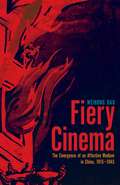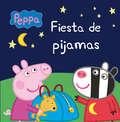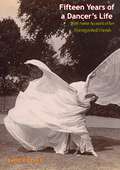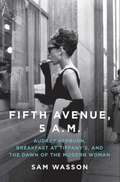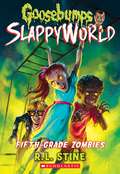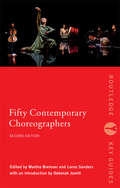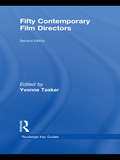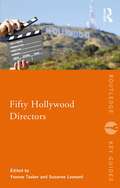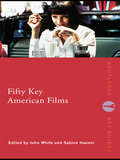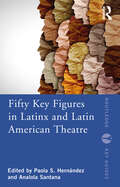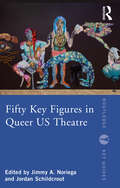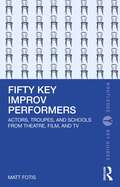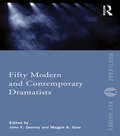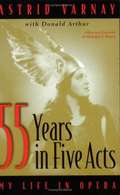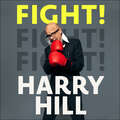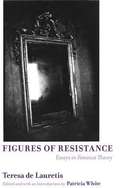- Table View
- List View
Fiery Cinema: The Emergence of an Affective Medium in China, 1915–1945 (A Quadrant Book)
by Weihong BaoWhat was cinema in modern China? It was, this book tells us, a dynamic entity, not strictly tied to one media technology, one mode of operation, or one system of aesthetic code. It was, in Weihong Bao&’s term, an affective medium, a distinct notion of the medium as mediating environment with the power to stir passions, frame perception, and mold experience. In Fiery Cinema, Bao traces the permutations of this affective medium from the early through the mid-twentieth century, exploring its role in aesthetics, politics, and social institutions.Mapping the changing identity of cinema in China in relation to Republican-era print media, theatrical performance, radio broadcasting, television, and architecture, Bao has created an archaeology of Chinese media culture. Within this context, she grounds the question of spectatorial affect and media technology in China&’s experience of mechanized warfare, colonial modernity, and the shaping of the public into consumers, national citizens, and a revolutionary collective subject. Carrying on a close conversation with transnational media theory and history, she teases out the tension and affinity between vernacular, political modernist, and propagandistic articulations of mass culture in China&’s varied participation in modernity.Fiery Cinema advances a radical rethinking of affect and medium as a key insight into the relationship of cinema to the public sphere and the making of the masses. By centering media politics in her inquiry of the forgotten future of cinema, Bao makes a major intervention into the theory and history of media.
Fiesta de pijamas (Peppa Pig. Primeras lecturas)
by Varios AutoresAprendemos a leer con las divertidas aventuras de Peppa Pig, la cerdita más famosa, que transmiten valores como la generosidad, la amistad o la sinceridad. Esta noche, Peppa va a su primera fiesta de pijamas. Lo más importante de una fiesta de pijamas es que ¡no puedes dormirte! Con música, un banquete a medianoche y un cuento de miedo... ¿Podrán Peppa y sus amigas quedarse despiertas? Los libros de la colección «Primeras lecturas» de Peppa Pig están pensados para niños que empiezan a leer. Sus textos contienen vocabulario sencillo, los interiores son muy visuales y, además, relatan las divertidas aventuras del personaje favorito de los niños. Todo ello logrará motivar y entretener a los pequeños lectores, así como estimular su imaginación.
Fifteen Years of a Dancer's Life: With Some Account of her Distinguished Friends
by Loie FullerAt a time when Art Nouveau was all the rage, Fuller burst upon the scene as its living embodiment. A new kind of dancer whose simple movements were highly expressive, she created a fantasy world of dazzling shapes and light play. Every mixed-media artist today owes a debt to her pioneering use of electrical lighting and her synthesis of music, color, light and fabric.—Anna Kisselgoff. The New York TimesLoïe Fuller began her theatrical career as a professional child actress and later choreographing and performing dances in burlesque, vaudeville, and circus shows. Although Fuller became famous in America, she felt that she was not taken seriously by the public. After a warm reception in Paris during a tour, Fuller remained in France and became a regular performer at the Folies Bergère with works such as Fire Dance; she became the embodiment of the Art Nouveau movement. Fuller’s pioneering work attracted the attention, respect, and friendship of many French artists and scientists, including Jules Chéret, Henri de Toulouse-Lautrec, François-Raoul Larche, Henri-Pierre Roché, Auguste Rodin, Stéphane Mallarmé, and Marie Curie. More a theatrician than a dancer, Fuller invented many effects we still use today: the stage surrounded in black curtains to focus attention on the performer; the color-wheel; scenic projection; and, “specials” that are individual lights used to emphasize an effect. She took pieces out of the stage floor, replacing them with glass panels and upwardly directed lights. Fuller held many patents related to stage lighting including chemical compounds for creating color gel and the use of chemical salts for luminescent lighting and garments. She was also a member of the French Astronomical Society. Fuller is responsible for the European tours of the early modern dancers, introducing Isadora Duncan to Parisian audiences and developing the acceptance of modern dance as a serious art form.-Uni of Washington.
Fifth Avenue, 5 A.M.
by Sam WassonAudrey Hepburn is an icon like no other, yet the image many of us have of Audrey-dainty, immaculate-is anything but true to life. Here, for the first time, Sam Wasson presents the woman behind the little black dress that rocked the nation in 1961. The first complete account of the making of Breakfast at Tiffany's, Fifth Avenue, 5 A.M. reveals little-known facts about the cinema classic: Truman Capote desperately wanted Marilyn Monroe for the leading role; director Blake Edwards filmed multiple endings; Hepburn herself felt very conflicted about balancing the roles of mother and movie star. With a colorful cast of characters including Truman Capote, Edith Head, Givenchy, "Moon River" composer Henry Mancini, and, of course, Hepburn herself, Wasson immerses us in the America of the late fifties before Woodstock and birth control, when a not-so-virginal girl by the name of Holly Golightly raised eyebrows across the country, changing fashion, film, and sex for good. Indeed, cultural touchstones like Sex and the City owe a debt of gratitude to Breakfast at Tiffany's. In this meticulously researched gem of a book, Wasson delivers us from the penthouses of the Upper East Side to the pools of Beverly Hills, presenting Breakfast at Tiffany's as we have never seen it before-through the eyes of those who made it. Written with delicious prose and considerable wit, Fifth Avenue, 5 A.M. shines new light on a beloved film and its incomparable star.
Fifth Avenue, 5 A.M.: Audrey Hepburn, Breakfast at Tiffany's, and the Dawn of the Modern Woman
by Sam WassonNow in paperback in time for the 60th anniversary of the film version Breakfast at Tiffany’s— the New York Times bestseller and first-ever complete account of Audrey Hepburn and the making of the film that Janet Maslin called “a bonbon of a book filled with delightful anecdotes”With a cast of characters that includes Audrey Hepburn, Truman Capote, and Gerald Clarke, this book offers a slice of social history seen through the lens of one of America’s most iconic films The images of Breakfast at Tiffany’s are branded into our collective memory: we can see Audrey Hepburn stepping out of that cab on the corner of 57th and 5th, and we can picture her again with George Peppard, huddled in an alleyway and wrapped in a kiss, as the rain pours down around them. Those moments are as familiar to us as any in whole the history of movies, but few of us know that that ending was not the film’s original ending. In fact, it was only one of two endings the filmmakers shot—and it almost didn’t make it in. The reasons why have to do with Tiffany’s cutting-edge take on sex in the city, namely, when to show it, and how to do it, without getting caught. If Truman Capote had it his way, his beloved Marilyn Monroe would have been cast as Holly, but crafty executives knew that she’d have the censors on red alert. So they went for Audrey. But would she go for them? Frightened at the prospect of playing a part so far beyond her accepted range—not to mention the part of call girl—Audrey turned inside out worrying if she should take her agent’s advice and accept the role. What would people think? America’s princess playing a New York bad girl? It seemed just too far…The First Little Black Dress is the first ever complete account of the making of Breakfast at Tiffany’s. Drawing upon countless interviews with those involved in the film’s production, from actors to producer Richard Shepherd to Gerald Clarke, Capote’s biographer, Wasson brings us inside the world and indeed inside the mind of one of America’s greatest cinematic icons.Wasson immerses us in the America of the late fifties, before Woodstock and birth control, when a not-so-virginal girl by the name of Holly Golightly raised eyebrows across the nation, changing fashion, film, and sex, for good. But that was the easy part. Getting Audrey there—and getting the right people behind her—that was the tough part.With the heart of a novelist and the eye of a critic, Wasson delivers us from the penthouses of the Upper East Side to the pools of Beverly Hills, from script to screen and from rehearsal to “Action!” The First Little Black Dress presents Breakfast at Tiffany’s as we have never seen it before—through the eyes of those who made it.
Fifth-grade Zombies: Slappyworld (Goosebumps Slappyworld #14)
by R. L. StineThis is Slappy's world -- You only scream in it! When city kid Todd Coates moves from Queens, New York, to live on a Wisconsin farm for a year, he's in for a more than just hanging out with his cousins Mila and Skipper. Strange things begin to happen all around him. But Todd is the only one who sees them. Late at night. In the cornfields. Todd is convinced there is something of the undead variety out there. Will he be able to prove it to his classmates before school is dismissed… permanently?
Fifty Classic British Films, 1932-1982: A Pictorial Record
by Anthony Slide200 striking photographs, in-depth commentaries, plot synposes, contemporary reviews, and more -- about 50 British classics from yesterday and today. Preface. Text. Alphabetical list of films. Bibliography.
Fifty Contemporary Choreographers (Routledge Key Guides)
by Jo Butterworth and Lorna SandersFifty Contemporary Choreographers is a unique and authoritative guide to the lives and work of prominent living contemporary choreographers; this third edition includes many new names in the field of choreography. Representing a wide range of dance genres and styles, each entry locates the individual in the context of contemporary dance and explores their impact. Those studied include: Kyle Abraham Germaine Acogny William Forsythe Marco Goeke Akram Khan Wayne McGregor Crystal Pite Frances Rings Hofesh Shechter Sasha Waltz With an updated introduction by Deborah Jowitt and further reading and references throughout, this text is an invaluable resource for all students and critics of dance and all those interested in the everchanging world and variety of contemporary choreography.
Fifty Contemporary Choreographers (Routledge Key Guides)
by Martha Bremser Lorna SandersA unique and authoritative guide to the lives and work of prominent living contemporary choreographers. Representing a wide range of dance genres, each entry locates the individual in the context of modern dance theatre and explores their impact. Those studied include: Jerome Bel Richard Alston Doug Varone William Forsythe Phillippe Decoufle Jawole Willa Jo Zollar Ohad Naharin Itzik Gallili Twyla Tharp Wim Vandekeybus With a new, updated introduction by Deborah Jowitt and further reading and references throughout, this text is an invaluable resource for all students and critics of dance, and all those interested in the fascinating world of choreography.
Fifty Contemporary Film Directors (Routledge Key Guides)
by Yvonne TaskerFifty Contemporary Film Directors examines the work of some of today’s most popular and influential cinematic figures. It provides an accessible overview of each director’s contribution to cinema, incorporating a discussion of their career, major works and impact. Revised throughout and with twelve new entries, this second edition is an up-to-date introduction to some of the most prominent film makers of the present day. The directors, from differing backgrounds and working across a range of genres, include: Martin Scorsese Steven Spielberg Sofia Coppola Julie Dash Shane Meadow Michael Moore Peter Jackson Guillermo Del Toro Tim Burton Jackie Chan Ang Lee Pedro Almodóvar. With further reading and a filmography accompanying each entry, this comprehensive guide is indispensable to all those studying contemporary film and will appeal to anyone interested in the key individuals behind modern cinema’s greatest achievements.
Fifty Hollywood Directors (Routledge Key Guides)
by Yvonne Tasker Suzanne LeonardFifty Hollywood Directors introduces the most important, iconic and influential filmmakers who worked in Hollywood between the end of the silent period and the birth of the blockbuster. By exploring the historical, cultural and technological contexts in which each director was working, this book traces the formative period in commercial cinema when directors went from pioneers to industry heavyweights. Each entry discusses a director’s practices and body of work and features a brief biography and suggestions for further reading. Entries include: Frank Capra Cecil B DeMille John Ford Alfred Hitchcock Fritz Lang Orson Welles DW Griffith King Vidor This is an indispensible guide for anyone interested in film history, Hollywood and the development of the role of the director.
Fifty Key American Films (Routledge Key Guides)
by John White Sabine HaenniFifty Key American Films explores and contextualises some of the most important films ever made in the United States. With case studies from the early years of cinema to the present day, this comprehensive Key Guide provides accessible analyses from a range of theoretical perspectives. This chronologically ordered volume includes coverage of: Citizen Kane Casablanca Psycho Taxi Driver Blade Runner Pulp Fiction Amongst a raft of well-known films, the work of some of America’s best known directors, such as Lynch, Scorsese, Coppola and Scott, is discussed. This book is essential reading for students of film, and will be of interest to anyone seeking to explore the impact of American cinema.
Fifty Key British Films (Routledge Key Guides)
by John White Sarah BarrowIn Fifty Key British Films, Britain's best known films such as Clockwork Orange, The Full Monty and Goldfinger are scrutinised for their outstanding ability to articulate the issues of the time. This is essential reading for anyone interested in quality, cult film.
Fifty Key Figures in LatinX and Latin American Theatre (Routledge Key Guides)
by Paola S HernándezFifty Key Figures in Latinx and Latin American Theatre is a critical introduction to the most influential and innovative theatre practitioners in the Americas, all of whom have been pioneers in changing the field. The chosen artists work through political, racial, gender, class, and geographical divides to expand our understanding of Latin American and Latinx theatre while at the same time offering a space to discuss contested nationalities and histories. Each entry considers the artist’s or collective’s body of work in its historical, cultural, and political context and provides a brief biography and suggestions for further reading. The volume covers artists from the present day to the 1960s—the emergence of a modern theatre that was concerned with Latinx and Latin American themes distancing themselves from an European approach. A deep and enriching resource for the classroom and individual study, this is the first book that any student of Latinx and Latin American theatre should read.
Fifty Key Figures in Queer US Theatre (Routledge Key Guides)
by Jordan Schildcrout Jimmy A. NoriegaWhether creating Broadway musicals, experimental dramas, or outrageous comedies, the performers, directors, playwrights, designers, and producers profiled in this collection have contributed to the representation of LGBTQ lives and culture in a variety of theatrical venues, both within the queer community and across the US theatrical landscape. Moving from the era of the Stonewall Riots to today, notable scholars in the field bring a wide variety of queer theatre artists into conversation with each other, exploring connections and differences in race, gender, physical ability, national origin, class, generation, aesthetic modes, and political goals, creating a diverse and inclusive study of 50 years of queer theatre. For readers seeking an introduction to or a deeper understanding of LGBTQ theatre, this volume offers thought-provoking analyses of theatre-makers both celebrated and lesser-known, mainstream and subversive, canonical and new.
Fifty Key Improv Performers: Actors, Troupes, and Schools from Theatre, Film, and TV (Routledge Key Guides)
by Matt FotisFifty Key Improv Performers highlights the history, development, and impact of improvisational theatre by highlighting not just key performers, but institutions, training centers, and movements to demonstrate the ways improv has shaped contemporary performance both onstage and onscreen. The book features the luminaries of improv, like Viola Spolin, Keith Johnstone, and Mick Napier, while also featuring many of the less well‑known figures in improvisation who have fundamentally changed the way we make and view comedy – people like Susan Messing, Jonathan Pitts, Robert Gravel, and Yvon Leduc. Due to improv’s highly collaborative nature, the book features many of the art form’s most important theatres and groups, such as The Second City, TJ & Dave, and Oui Be Negroes. While the book focuses on the development of improvisation in the United States, it features several entries about the development of improv around the globe. Students of Improvisational Theatre, History of Comedy, and Performance Studies, as well as practitioners of comedy, will benefit from the wide expanse of performers, groups, and institutions throughout the book.
Fifty Modern and Contemporary Dramatists (Routledge Key Guides)
by Maggie B. Gale John F. DeeneyFifty Modern and Contemporary and Dramatists is a critical introduction to the work of some of the most important and influential playwrights from the 1950s to the present day. The figures chosen are among the most widely studied by students of drama, theatre and literature and include such celebrated writers as: • Samuel Beckett • Caryl Churchill • Anna Deavere Smith • Jean Genet • Sarah Kane • Heiner Müller • Arthur Miller • Harold Pinter • Sam Shephard Each short essay is written by one of an international team of academic experts and offers a detailed analysis of the playwright’s key works and career. The introduction provides an historical and theatrical context to the volume, which provides an invaluable overview of modern and contemporary drama.
Fifty Years of "The Battle of Algiers": Past as Prologue (Forerunners: Ideas First)
by Sohail DaulatzaiThe Battle of Algiers, a 1966 film that poetically captures Algerian resistance to French colonial occupation, is widely considered one of the greatest political films of all time. With an artistic defiance that matched the boldness of the anticolonial struggles of the time, it was embraced across the political spectrum—from leftist groups like the Black Panther Party and the Palestine Liberation Organization to right-wing juntas in the 1970s and later, the Pentagon in 2003. With a philosophical nod to Frantz Fanon, Sohail Daulatzai demonstrates that tracing the film&’s afterlife reveals a larger story about how dreams of freedom were shared and crushed in the fifty years since its release. As the War on Terror expands and the &“threat&” of the Muslim looms, The Battle of Algiers is more than an artifact of the past—it&’s a prophetic testament to the present and a cautionary tale of an imperial future, as perpetual war has been declared on permanent unrest.Forerunners: Ideas First is a thought-in-process series of breakthrough digital publications. Written between fresh ideas and finished books, Forerunners draws on scholarly work initiated in notable blogs, social media, conference plenaries, journal articles, and the synergy of academic exchange. This is gray literature publishing: where intense thinking, change, and speculation take place in scholarship.
Fifty-five Years in Five Acts: My Life in Opera
by Astrid Varnay Donald ArthurFor Astrid Varnay, opera was the family business. The daughter of coloratura soprano Mária Jávor and dramatic tenor Alexander Várnay, she literally grew up backstage at the opera. Vocally and musically trained by her mother and mentor (and later husband) Hermann Weigert, she was just twenty-three years old when she made her unofficial debut at the Metropolitan Opera as a last-minute replacement for the suddenly ill Lotte Lehmann. Varnay's critically acclaimed performance as Sieglinde in Die Walküre catapulted her into the limelight. Varnay reflects on her remarkable life in opera, discussing her signature roles and performances, vocal preparation and technique, interpretive acting style, and her seamless transition from leading soprano to character roles, including her switch from Elektra to Klytemnästra in Strauss's Elektra. Her engaging and witty memoir is filled with frank, often critical, observations about many of the most significant vocal artists, conductors, and directors of the twentieth century. She describes her lifelong friendship with operatic idol Kirsten Flagstad, the years at the Met and conflicts with Rudolf Bing, her appearances at the Bayreuth and Salzburg Festivals, and her artistic rift with Herbert von Karajan.<P><P> This book is also listed in libraries as "55 Years in Five Acts: My Life in Opera"
Fight!: Thirty Years Not Quite at the Top
by Harry Hill'The funniest man in the world has written the funniest book in the world.' DAVID WALLIAMS'A brilliant insight in to what it takes to go from regular funny bloke to one of the best stand ups I've ever seen.' LEE MACK'Proper laugh-out-loud funny, fascinating, and doubles up as probably the best book of advice on how to be a comedian I've ever read. A must for anyone who's interested in the business of laughter.' JOE LYCETTFrom a childhood spent making smoke bombs, killing wasps and carving soap in 70s Kent, Harry Hill then found himself in charge of hundreds of sick people as a junior doctor. Out of his depth and terrified, he chucked it all in to pursue his dream of becoming a stand-up comedian. Battling his way through the 90s Comedy circuit he quickly rose to become a household name and one of the UK's most celebrated comics, almost making it to the top of the showbiz tree . . .From being chased around a car park by an angry heckler, getting fired from Capital Radio and watching every episode of Freaky Eaters, to a bizarre assassination attempt and cutting up Simon Cowell's trousers, Harry takes an honest and hilarious look at the ups and downs of his life and career through the lens of what didn't go right.He shares his secrets on how to be a great comedian, finding joy in failure and creativity in struggle, whilst never forgetting that life is short . . .
Fight!: Thirty Years Not Quite at the Top
by Harry Hill'The funniest man in the world has written the funniest book in the world.' DAVID WALLIAMS'A brilliant insight in to what it takes to go from regular funny bloke to one of the best stand ups I've ever seen.' LEE MACK'Proper laugh-out-loud funny, fascinating, and doubles up as probably the best book of advice on how to be a comedian. A must for anyone who's interested in the business of laughter.' JOE LYCETTFrom a childhood spent making smoke bombs, killing wasps and carving soap in 70s Kent, Harry Hill then found himself in charge of hundreds of sick people as a junior doctor. Out of his depth and terrified, he chucked it all in to pursue his dream of becoming a stand-up comedian. Battling his way through the 90s Comedy circuit he quickly rose to become a household name and one of the UK's most celebrated comics, almost making it to the top of the showbiz tree . . .From being chased around a car park by an angry heckler, getting fired from Capital Radio and watching every episode of Freaky Eaters, to a bizarre assassination attempt and cutting up Simon Cowell's trousers, Harry takes an honest and hilarious look at the ups and downs of his life and career through the lens of what didn't go right.He shares his secrets on how to be a great comedian, finding joy in failure and creativity in struggle, whilst never forgetting that life is short . . .What readers are saying about Fight!'Hilarious... recommended unreservedly' *****'Lots of laughs and memories of days gone by' *****'A great book... I could not put it down' *****'Beautifully written and great fun' *****(P) 2021 Hodder & Stoughton Limited
Fight!: Thirty Years Not Quite at the Top
by Harry HillA TIMES BEST COMEDY BOOK OF 2021'The funniest man in the world has written the funniest book in the world' DAVID WALLIAMS'A brilliant insight into what it takes to go from regular funny bloke to one of the best stand-ups I've ever seen' LEE MACK'Proper laugh-out-loud funny, fascinating, and...a must for anyone who's interested in the business of laughter' JOE LYCETTAfter a childhood spent making smoke bombs, killing wasps and carving soap in 70s Kent, Harry Hill then found himself in charge of hundreds of sick people as a junior doctor. Out of his depth and terrified, he chucked it all in to pursue his dream of becoming a stand-up comedian. Battling his way through the 90s comedy circuit he quickly rose to become a household name and one of the UK's most celebrated comics, almost making it to the top of the showbiz tree...From being chased by an angry heckler and getting fired from Capital Radio to a bizarre assassination attempt and cutting up Simon Cowell's trousers, Harry takes an honest and hilarious look at the ups and downs of his life and career, finding joy in failure and creativity in struggle, whilst never forgetting that life is short.
Fighting for Air: In the Trenches with Television News
by Liz TrottaLiz Trotta traces her career from the early days of broadcast news to the slick superficiality of today. The first female television correspondent in Vietnam, Trotta tells the searing truth about being a woman in a male-dominated industry and recounts many of her most fascinating stories, from the scandal of Chappaquiddick to the campaign trail of George Bush.
Figures of Resistance: Essays in Feminist Theory
by Patricia White Teresa De LauretisThe changing face of feminist discourse as reflected by the career of one of its preeminent scholars Figures of Resistance brings together the unpublished lectures and little-seen essays of internationally renowned theorist Teresa de Lauretis, spanning over twenty years of her finest work. Thirty years after the height of feminist theory, this collection invites us to reflect on the history of feminism and take a hard look at where it stands today. Selected essays include "Sexual Indifference and Lesbian Representation," "The Lure of the Mannish Lesbian," "Eccentric Subjects," "Habit Changes," "The Intractability of Desire," and the unpublished article "Figures of Resistance." An introduction from feminist film scholar Patricia White provides an overview of the development of de Lauretis's thought and of feminist theory over past decades.
Figures of Time: Affect and the Television of Preemption (Thought in the Act)
by Toni PapeMany contemporary television series from Modern Family to How to Get Away with Murder open an episode or season with a conflict and then go back in time to show how that conflict came to be. In Figures of Time Toni Pape examines these narratives, showing how these leaps in time create aesthetic experiences of time that attune their audiences to the political doctrine of preemption—a logic that justifies preemptive action to nullify a perceived future threat. Examining questions of temporality in Life on Mars, the political ramifications of living under the auspices of a catastrophic future in FlashForward, and how Damages disrupts the logic of preemption, Pape shows how television helps shift political culture away from a model of rational deliberation and representation toward a politics of preemption and conformity. Exposing the mechanisms through which television supports a fear-based politics, Pape contends, will allow for the rechanneling of television's affective force into building a more productive and positive politics.
